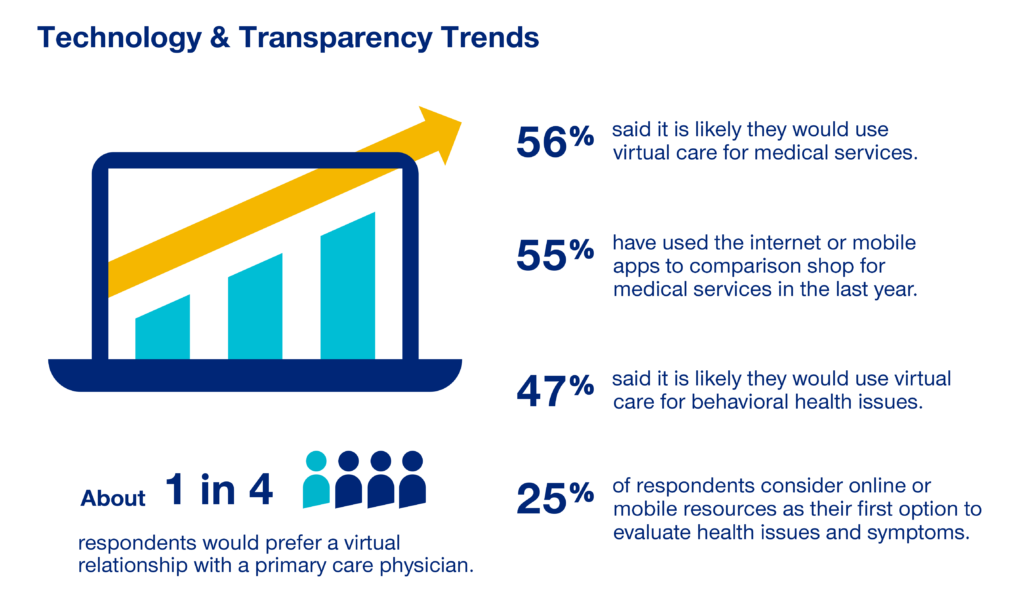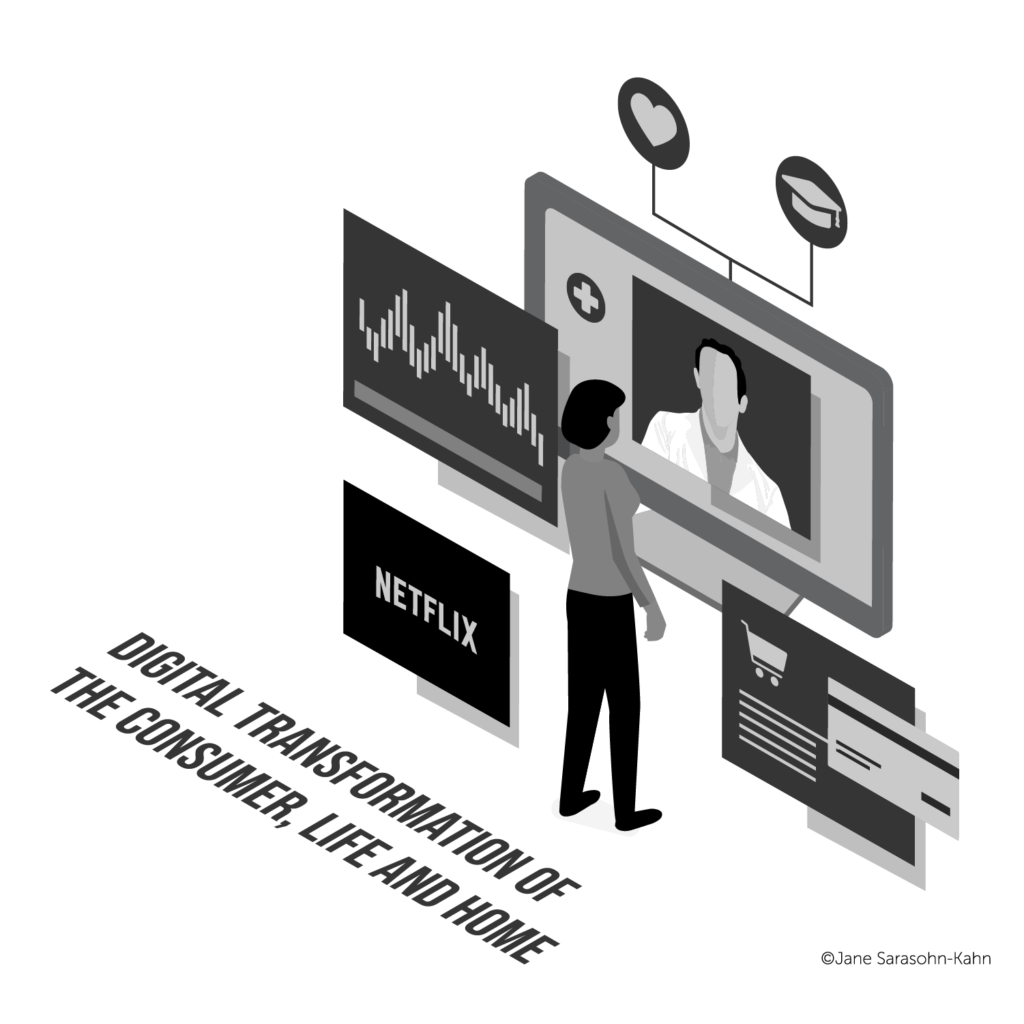Over one-half of Americans would likely use virtual care for their healthcare services, and one in four people would actually prefer a virtual relationship with a primary care physician, according to the fifth annual 2020 Consumer Sentiment Survey from UnitedHealthcare.
 What a difference a pandemic can make in accelerating patients’ adoption of digital health tools.
What a difference a pandemic can make in accelerating patients’ adoption of digital health tools.
This survey was conducted in mid-September 2020, and so the results demonstrate U.S. health consumers’ growing digital health “muscles” in the form of demand and confidence in using virtual care.
One in four people would consider online options as their first-line to evaluating personal health issues — a kind of “digital step therapy,” if you will.
One of the key toxic side effects of the COVID-19 public health crisis has been peoples’ growing sense of isolation and feeling lonely, increasing peoples’ need for mental and behavioral health services.
One in two people said it would be likely they would use telehealth for behavioral health, which is a big move of the needle in a couple of ways: growing awareness of mental health need and demand in America, and with that a decline in the taboo of seeking care.
On the consumerism front, UHC found that over one-half of people have gone online via either web search or mobile app to find medical services and seek price transparency. Nearly one-half of people also said that COVID-19 had influenced the health plan features they seek for 2021 plan selection, with one-third of people spending more time shopping for/researching health plan options.
About 1 in 2 people said that the process of shopping for health care prompted them to change their health care provider.
 Health Populi’s Hot Points: I’ve written that one of the relative “gifts” of the coronavirus pandemic has been the digital transformation of the consumer. This graphic comes out of my book, Health Citizenship: How a virus opened up hearts and minds. The drawing illustrates the many life-flows that consumers adopted as a result of the Great Lockdown, tele-working from home, going to school from home, streaming entertainment instead of heading to the brick-and-mortar cinema, shopping, and indeed, accessing health care.
Health Populi’s Hot Points: I’ve written that one of the relative “gifts” of the coronavirus pandemic has been the digital transformation of the consumer. This graphic comes out of my book, Health Citizenship: How a virus opened up hearts and minds. The drawing illustrates the many life-flows that consumers adopted as a result of the Great Lockdown, tele-working from home, going to school from home, streaming entertainment instead of heading to the brick-and-mortar cinema, shopping, and indeed, accessing health care.
The home has emerged as our health hub in the pandemic, and that won’t be just a trend: that will persist. The UHC study found that roughly one-half of patients-as-consumers would likely use virtual care services ongoing.
The challenges for telehealth and virtual care to become integrated as just one on-ramp in the growing omni-channel health care landscape will involve several factors to align: payment (where value-based and bundled payment would more quickly foster virtual care adoption), clinician work-flows and the case for quality and appropriateness for virtual care encounters, and technical — not so much the platforms themselves, but the data interoperability between the provider, site, patient EHR, payor system, and other data destinations.
UHC’s research has revealed the bullish demand side among consumers seeking greater convenience, control, empowerment, and access for health care services. Even 43% of Baby Boomers said they used the internet or mobile apps in the past year to shop for medical services.
Digital transformation has impacted people across all ages and demographics. We must be mindful and attend to digital divides that this fast-pivot toward the virtual care channel has revealed. Like COVID-19 itself, there are social determinants and factors that the pandemic has revealed preventing people from fully engaging in life and health care in the broader contours of the public health crisis.
The post The COVID-19 Era Has Grown Health Consumer Demand for Virtual Care appeared first on HealthPopuli.com.
The COVID-19 Era Has Grown Health Consumer Demand for Virtual Care posted first on https://carilloncitydental.blogspot.com
No comments:
Post a Comment